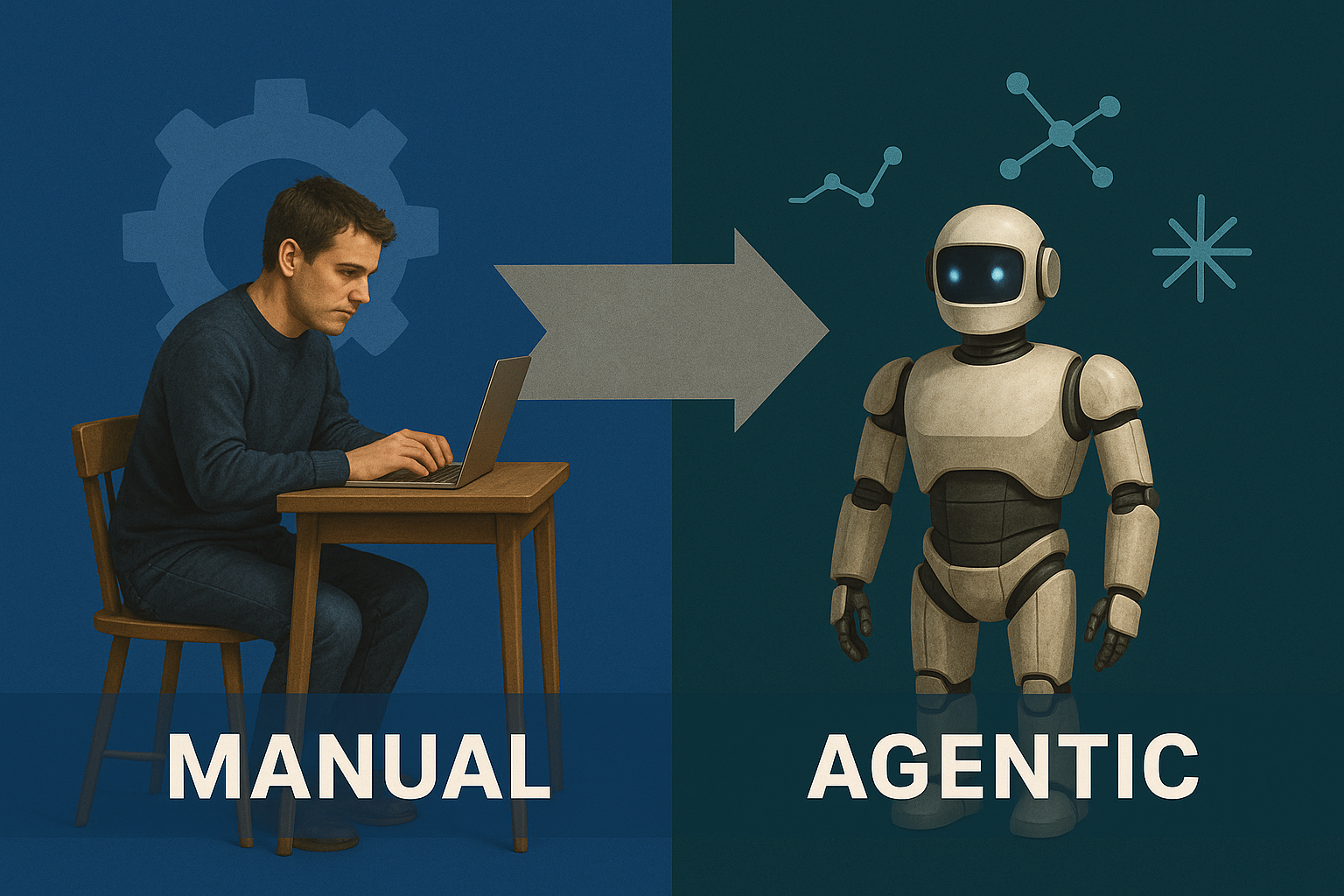Table of Contents
The Shift That’s Already Here
Managed Service Providers (MSPs) have always relied on efficiency. Scaling services across dozens—or hundreds—of client environments meant standardization, repeatable processes, and automation. For a long time, that meant robotic process automation (RPA) and, later, professional services automation (PSA) tools.
But the operating environment has changed. Attackers are no longer sending generic spam—they’re using generative AI to launch polymorphic phishing campaigns, realistic business email compromise (BEC) lures, and even deepfake-enabled requests that convincingly mimic trusted colleagues. Static workflows weren’t built for this level of adaptation, forcing MSPs to rethink the foundations of their operations.
What we’re witnessing now is the third major era of MSP operations: the move from RPA to PSA to agentic AI. Unlike static tools, Large Language Models (LLMs) and autonomous agents interpret context, learn from feedback, and act dynamically across the stack. For MSPs, this isn’t a simple upgrade—it’s the next stage of operational evolution.
Tracing the Evolution: RPA → PSA → Agentic AI
- RPA (Robotic Process Automation) – Early automation mimicked clicks and keystrokes but broke whenever interfaces, policies, or processes shifted.
- PSA (Professional Services Automation) – Standardized ticketing, billing, and reporting, but still relied on rigid rules.
- Agentic AI – The new era where large language models and autonomous agents can interpret intent, correlate across tools, and adapt actions in real time rather than executing static scripts.
- Limitations of the past – RPA and PSA reduced overhead but could not keep pace with polymorphic phishing, deepfake-enabled BEC, or the operational noise facing modern MSPs.
Agentic AI represents not just another tool, but the next stage of operational design—one where automation moves from following instructions to reasoning in context and evolving alongside both attacker tactics and staffing realities.
Why Now?
Several pressures are making the move from static automation to agentic AI unavoidable for MSPs.
Attackers are now using generative AI to produce polymorphic phishing lures and even deepfake-enabled BEC attempts that slip past static rules. These lures evolve too quickly for rules-based defenses to keep pace.
At the same time, MSP technology stacks have become sprawling and brittle—M365, SEGs, PSAs, RMMs, SIEM/SOAR—all connected but prone to breaking whenever policies or APIs shift. The complexity of managing these integrations adds new points of failure.
Add to this the reality of analyst churn, where high turnover means constant retraining, and static workflows do little to reduce the background noise. Teams burn out chasing repetitive alerts while new hires face steep learning curves.
Finally, large language models have reached a level of maturity where they can reason over alerts, correlate context across systems, and adapt in real time rather than follow rigid scripts. Together, these pressures make static workflows untenable and highlight both the opportunities and risks of adopting agentic AI.
Operational Improvements and Cautions
Improvements:
- Faster phishing remediation – Agentic AI clusters polymorphic phishing campaigns and removes every variant tenant-wide in seconds.
- Noise reduction – User-reported emails are pre-analyzed by AI, cutting false positives and freeing analysts from endless manual triage.
- Adaptability – AI models continuously retrain on GenAI-driven lures, deepfakes, and evolving sender behavior, unlike static rule sets.
- Analyst enablement – Virtual SOC assistants like Themis provide real-time context, reducing the training ramp for new hires and lowering churn.
Cautions:
- Over-reliance risk – Pure AI “black box” systems can act without context, creating compliance gaps or missed intent.
- Automation tuning – MSPs calibrate how much autonomy agents apply, balancing efficiency with customer control expectations.
- Human-in-the-loop necessity – Even with 99% coverage, subtle targeted attacks still demand human validation.
AI in MSP Operations
In practice, agentic AI is already reshaping how MSPs work:
- Agentic SOC automation – Virtual SOC assistants classify, cluster, and remediate threats with hands-free automation while leaving final control with MSPs.
- Community-driven learning – Thousands of security professionals continuously feed insights into shared models, helping detect never-seen-before attacks faster.
- Integrated training and awareness – Phishing simulations, contextual banners, and GPT-powered copilots help end users contribute to detection rather than add to analyst workload.
For MSPs, this is the difference between spending 30 minutes chasing a phishing email and resolving it in under 30 seconds.
Preparing for the Next Decade
Static workflows gave MSPs a foundation, but they were designed for a different era. Today’s attacks evolve too quickly, and yesterday’s automation is breaking under the weight of modern complexity.
Agentic AI represents a shift in how operations are run: from rigid scripts to adaptable systems that learn, reason, and act. The challenge for leaders is not whether to adopt, but how to integrate these agents in a way that preserves oversight and builds trust.
The future of MSP operations belongs to those who strike the right balance—leveraging intelligent agents for scale and consistency, while preserving human judgment where it matters most.
Explore More Articles
Say goodbye to Phishing, BEC, and QR code attacks. Our Adaptive AI automatically learns and evolves to keep your employees safe from email attacks.

/Concentrix%20Case%20Study.webp?width=568&height=326&name=Concentrix%20Case%20Study.webp)












.webp?width=100&height=100&name=PXL_20220517_081122781%20(1).webp)

